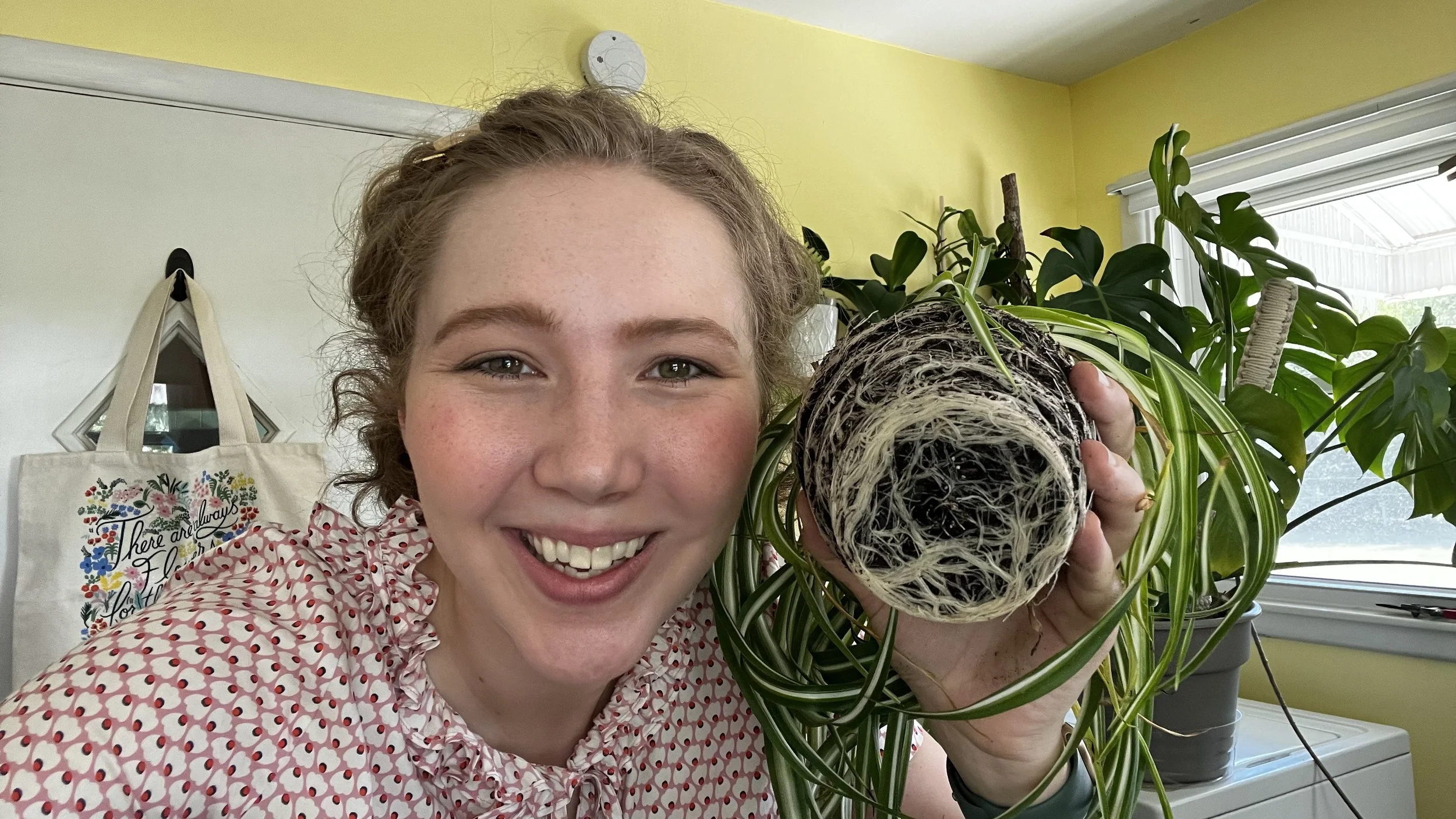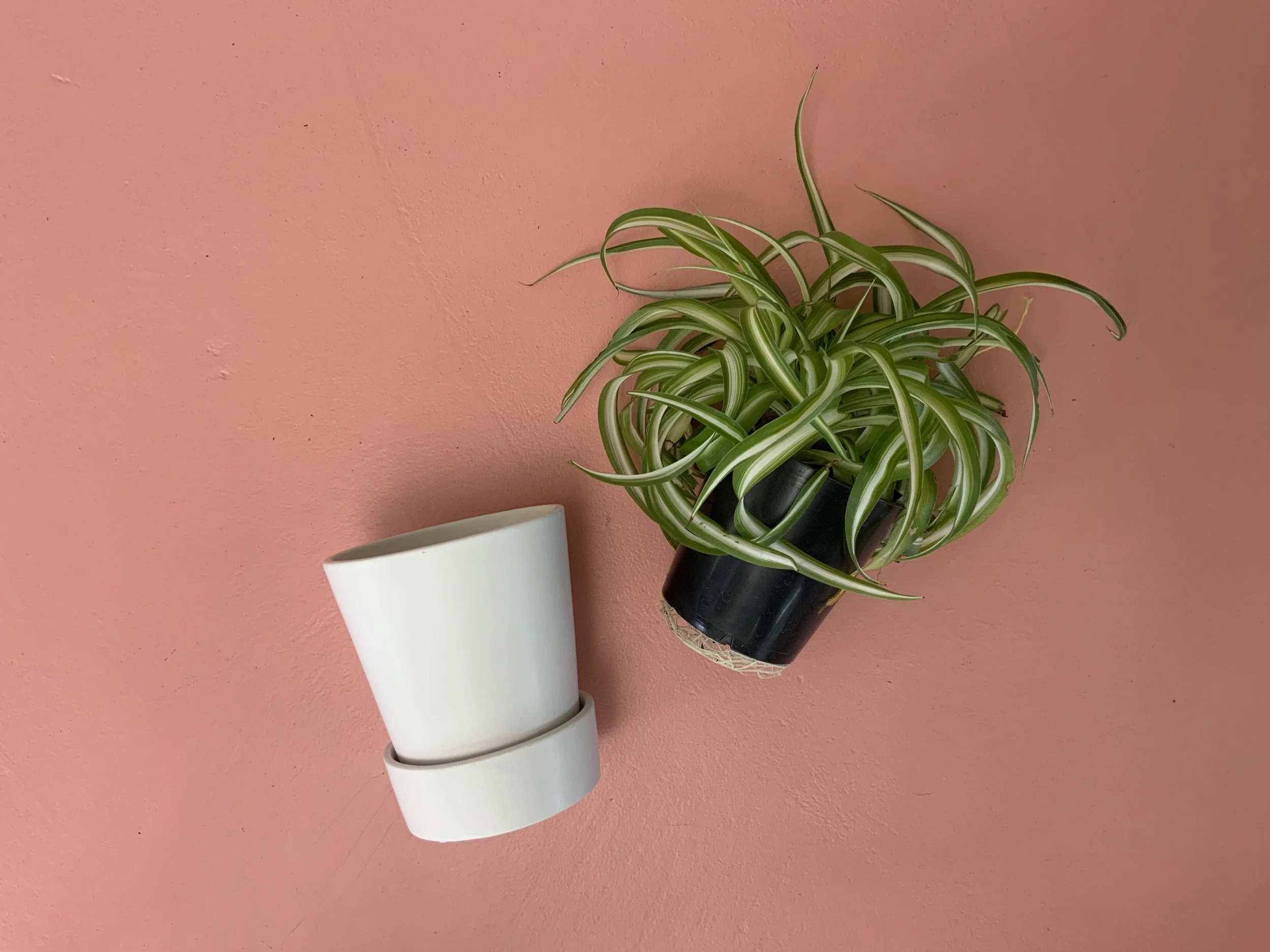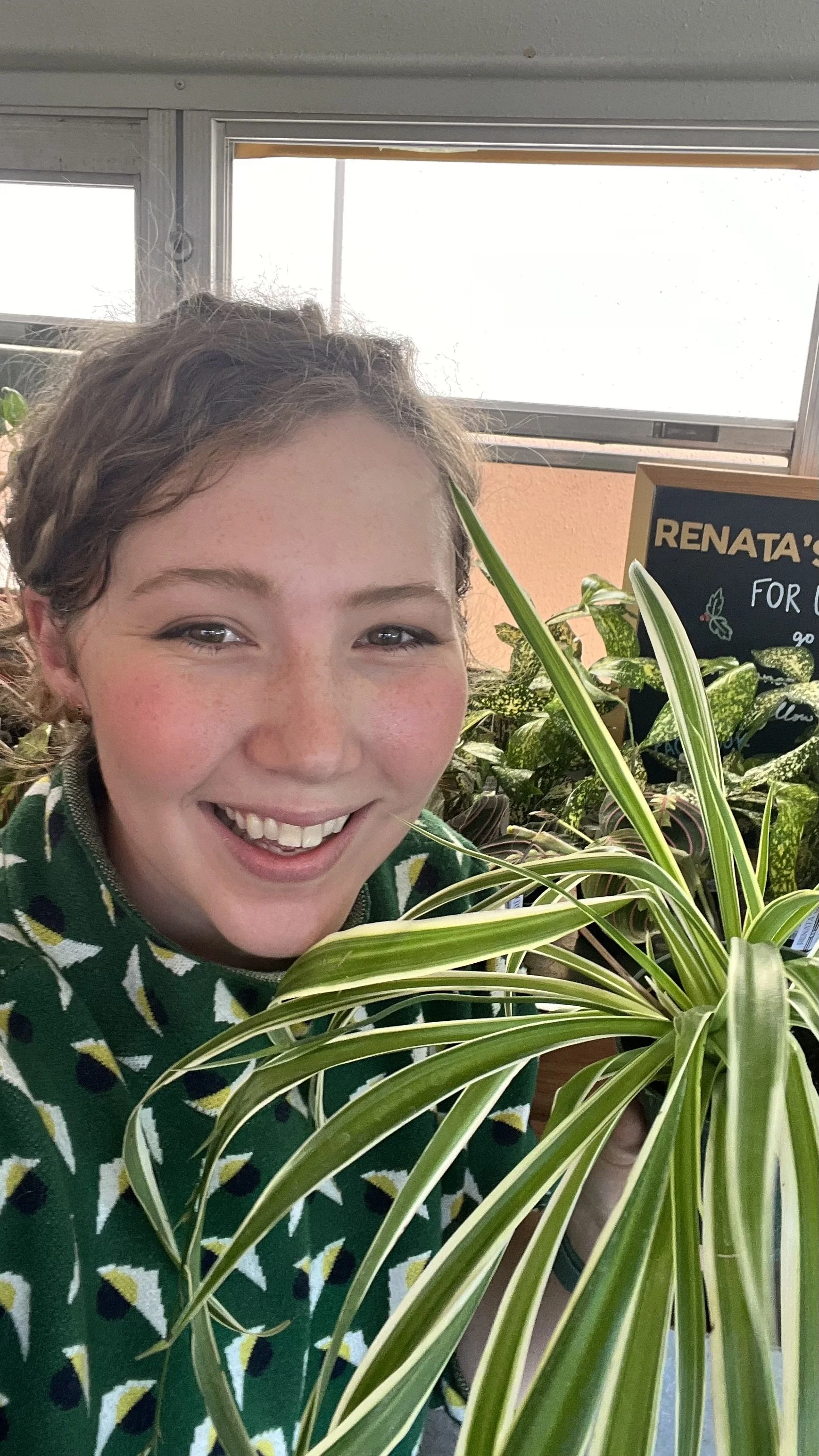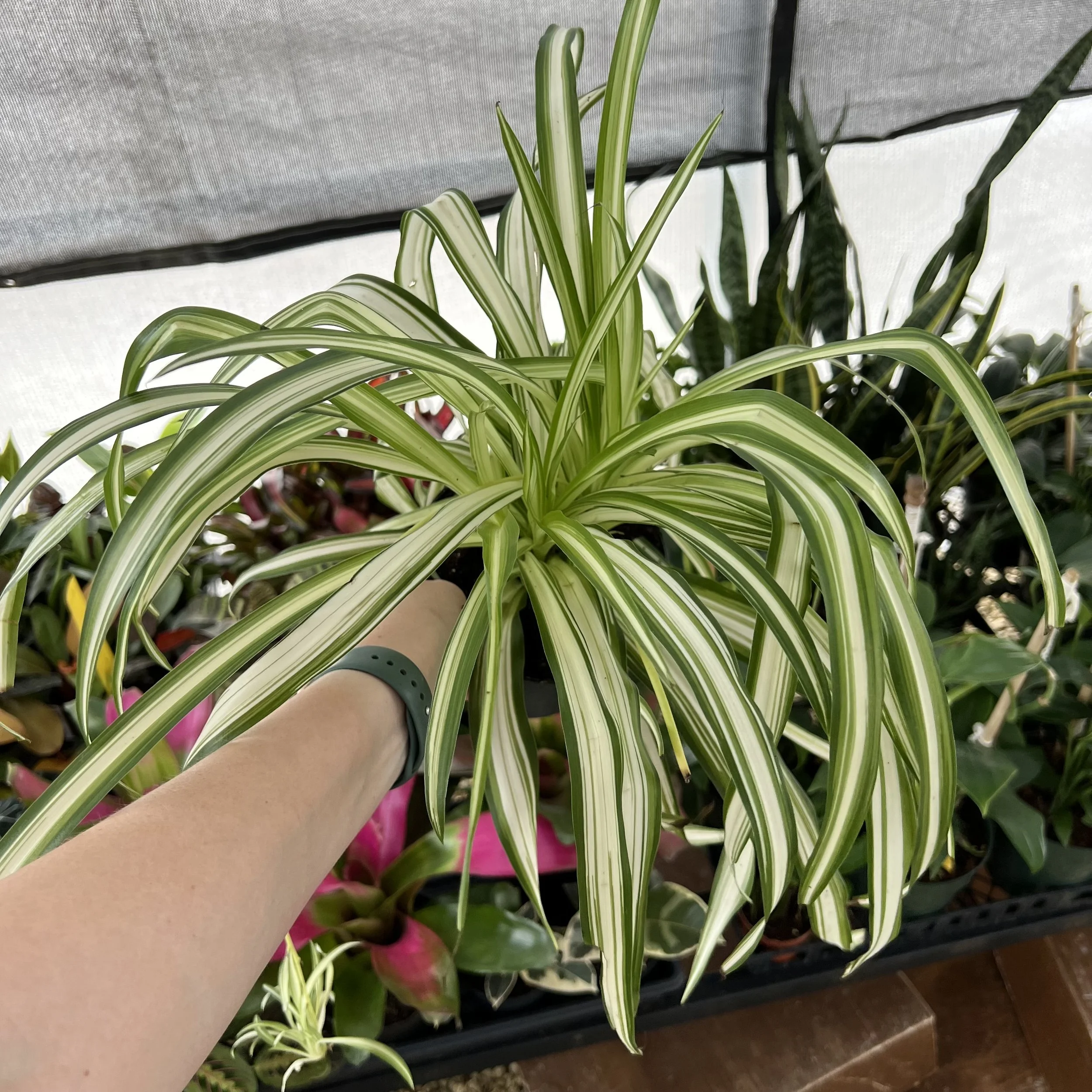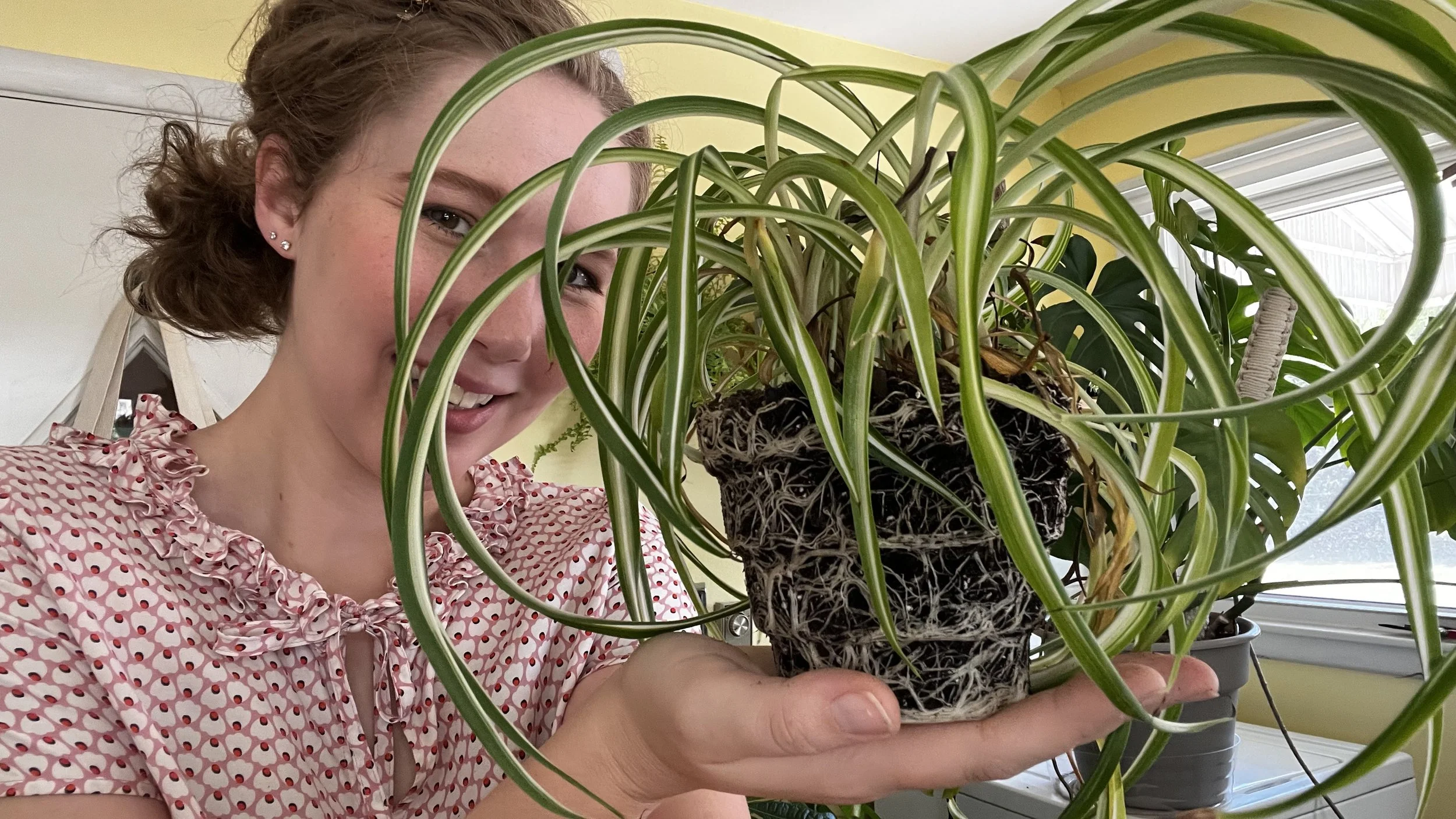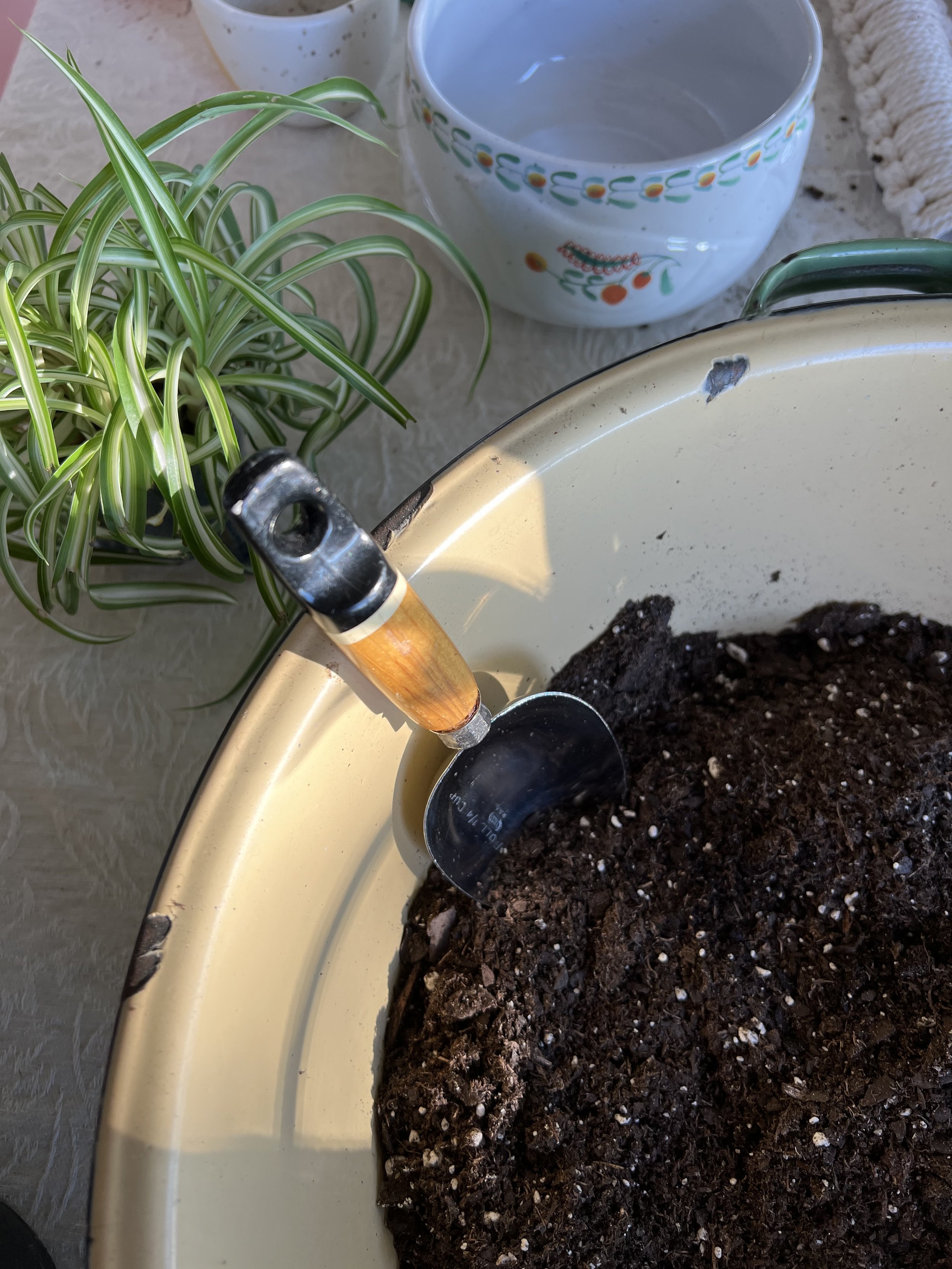
Spider Plant
Chlorophytum
Family Asparagaceae
-
Light: Indirect, bright light is best for this plant. Spider plants will stretch and get leggy if kept in an area that is too dark. However, they are generally good plants for lower light levels.
Temperature: 55-85 F
Humidity: medium
Leaf tip burn can occur in dry conditions.
-
Water: Water when the top 2-4” of potting mix has dried. Spider plants have small geophytic structures in their roots to help store water, but they are also fast drinkers. Keep an eye on them, especially in drier conditions to prevent long periods of drought.
Repotting: Repot every 1-2 years into a slightly larger container (1-2” increased diameter or depth). Use a general purpose potting mix.
Fertilizing: Either…
Water Application: Incorporate fertilizer into your watering cycle once per month March through September. Dilute an all purpose fertilizer (20-20-20) by half OR use your favorite fertilizer rated for houseplant use in your water.
Slow Release: Incorporate slow release fertilizer pellets into the top inch of potting soil every 6 months. Apply the rate indicated for indoor plants on the label. If no recommendation for houseplants is present, apply 1/4 to 1/2 the listed rate.
-
Asparagaceae has one obvious member, and it’s a favorite vegetable of many—asparagus! Did you know that the vegetable we consume is actually a flower spike? There are over 2500 genera in this family because of the common flower spike morphology. If you’ve ever seen a dracaena or spider plant flower, you’ll notice they look similar.
A word of caution—just because these houseplants are in the asparagus family, does not mean they are always edible.
-
(Listed in order of commonality…)
Fast growth resulting in root-bound pots and fast dry down
Thrips
Leaf tip burn from dry air or infrequent watering patterns
-
Is spider plant pet safe?
Yes; in fact, cats enjoy it immensely if you know what I mean…
Have a more specific question?
I’m just a few clicks away.

